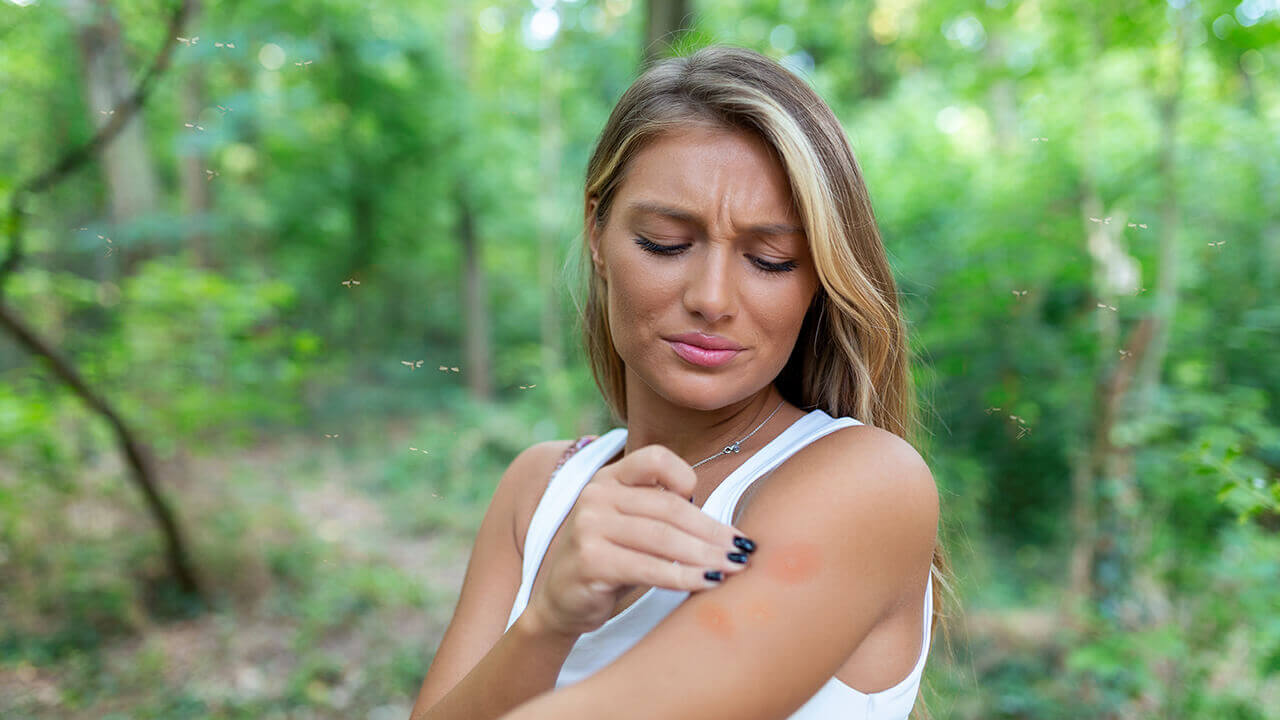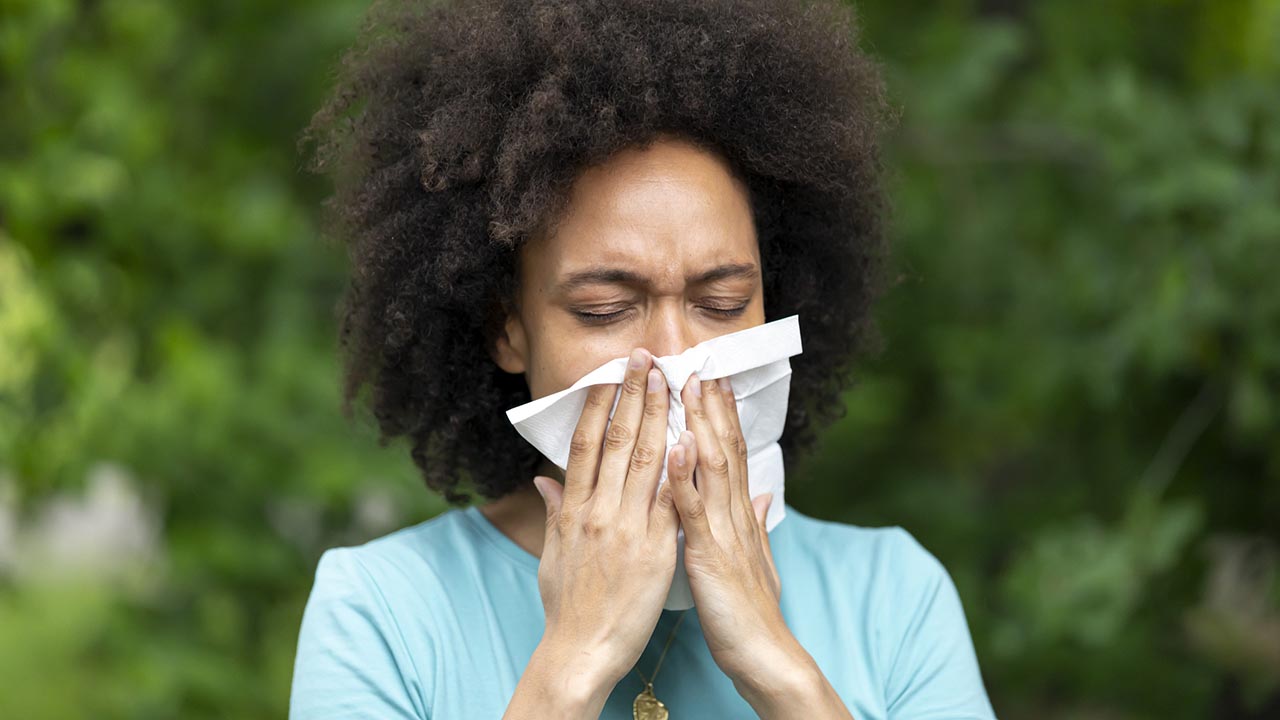

While many of us think of summer as a time to get outside and enjoy the warm weather, those with sting allergies become extra cautious outdoors, especially around stinging insects like bees and wasps. According to the National Institute of Health (NIH), allergic reactions to insect stings will affect up to 5% of people in their lifetime.
Allergy testing for stinging insects typically requires an appointment with an allergist. At the appointment, the allergist tests the skin with a series of small scratches and very small injections and monitors for an allergic reaction. If skin testing is negative and/or if you have a history of a very severe reaction, blood testing may be recommended.
Prior to allergy testing, your allergist will discuss how to prepare for the skin testing. This includes stopping any medications that may interfere with the testing.
If you find an insect nest in or near your house, call a pest-control service to safely remove it. Do not try to get rid of it yourself! Additionally, stinging insects become more aggressive in late summer and early fall, so take extra caution at this time of the year.
If you have questions or concerns about stinging insect allergies, consult with a Prevea Allergist.
Types of stinging insects
Stinging insects inject use their stingers to inject venom into your skin when they feel confused or threatened. There are four types of stinging insects that are responsible for most serious allergic reactions:- Honeybees
- Wasps/hornets
- Yellow jackets
- Fire ants (in the southern U.S.)
Types of sting reactions
When a stinging insect stings you, there are three main types of reactions that can occur:- Local reactions, which can be either:
- Uncomplicated local reactions that develop within minutes of being stung and typically resolve within a few hours. With these reactions, there will be an area of redness and painful swelling ½”-2” in diameter at the sting site. Occasionally, the swelling can last 1-2 days before resolving.
- Large local reactions (LLRs) that occur in approximately 10% people. The redness and swelling around and at the site of the sting is more than 2” in diameter and continues to increase in size over a 48-hour period. LLRs resolve gradually over 5 to 10 days.
- Systemic cutaneous reactions are characterized by hives occurring in areas of the body that were not stung or over the entire body, but without signs of anaphylaxis (see below).
- Anaphylactic reactions, which occur in approximately 1-3% of people, can look differently for each person, but the most common symptoms include:
- Trouble breathing, becoming hoarse or wheezing.
- Swelling, especially in the throat or around the face, eyelids, mouth, hands or feet.
- Stomach cramps, nausea, vomiting or diarrhea.
- Feeling dizzy or passing out.
Treating sting reactions
If an insect stings you, your treatment is based on the type of reaction that occurs.- Uncomplicated local reactions can be treated with a cold compress and non-steroidal anti-inflammatory drugs (NSAIDs), such as ibuprofen to reduce pain. Long-acting oral antihistamines and high potency topical steroids can help with itching.
- Large local reactions (LLRs) can be treated with a cold compress and NSAIDs. Elevating the area of the sting can also help to reduce swelling. Like uncomplicated local reactions, long-acting oral antihistamines and high potency topical steroids can help with itching. A doctor may also consider prescribing a medication to help with swelling, if needed.
- Systemic cutaneous reactions with no signs of anaphylaxis can be treated with a long-acting oral antihistamine. If there is any concern for anaphylaxis or you are unsure, err on the side of caution and use an injectable epinephrine.
- Anaphylactic reactions are life-threatening and best treated with injectable epinephrine as soon as possible. If this reaction occurs, try to stay calm and call for help or dial 911. Lie down and elevate your legs to improve blood flow in the body. Those with a history of anaphylaxis can be prepared by always carrying a two-pack of their injectable epinephrine, because a second dose may be needed before help arrives. They can also practice using the device with their medical team before they need it.
Allergy testing for stinging insects
Anyone who has a history of an anaphylactic reaction should be tested for a stinging insect allergy. An allergist can discuss prior reactions and determine if it makes sense for you to be tested.Allergy testing for stinging insects typically requires an appointment with an allergist. At the appointment, the allergist tests the skin with a series of small scratches and very small injections and monitors for an allergic reaction. If skin testing is negative and/or if you have a history of a very severe reaction, blood testing may be recommended.
Prior to allergy testing, your allergist will discuss how to prepare for the skin testing. This includes stopping any medications that may interfere with the testing.
Avoiding stings
There are several ways to avoid being stung when outside enjoying the summer weather.- Stay calm and slowly back away if you see a stinging insect; do not wave your arms to “shoo” the insect away.
- Keep food and drinks covered and clean up any spills right away.
- Take care when placing trash in outdoor cans to keep it contained and covered.
- Avoid wearing sandals and open-toed shoes.
- Avoid doing things that may disturb an insect nest, such as mowing or working near it.
- If you live in an area that has fire ants, avoid stepping on ant mounds and wear shoes and socks when outside.
If you find an insect nest in or near your house, call a pest-control service to safely remove it. Do not try to get rid of it yourself! Additionally, stinging insects become more aggressive in late summer and early fall, so take extra caution at this time of the year.
If you have questions or concerns about stinging insect allergies, consult with a Prevea Allergist.


